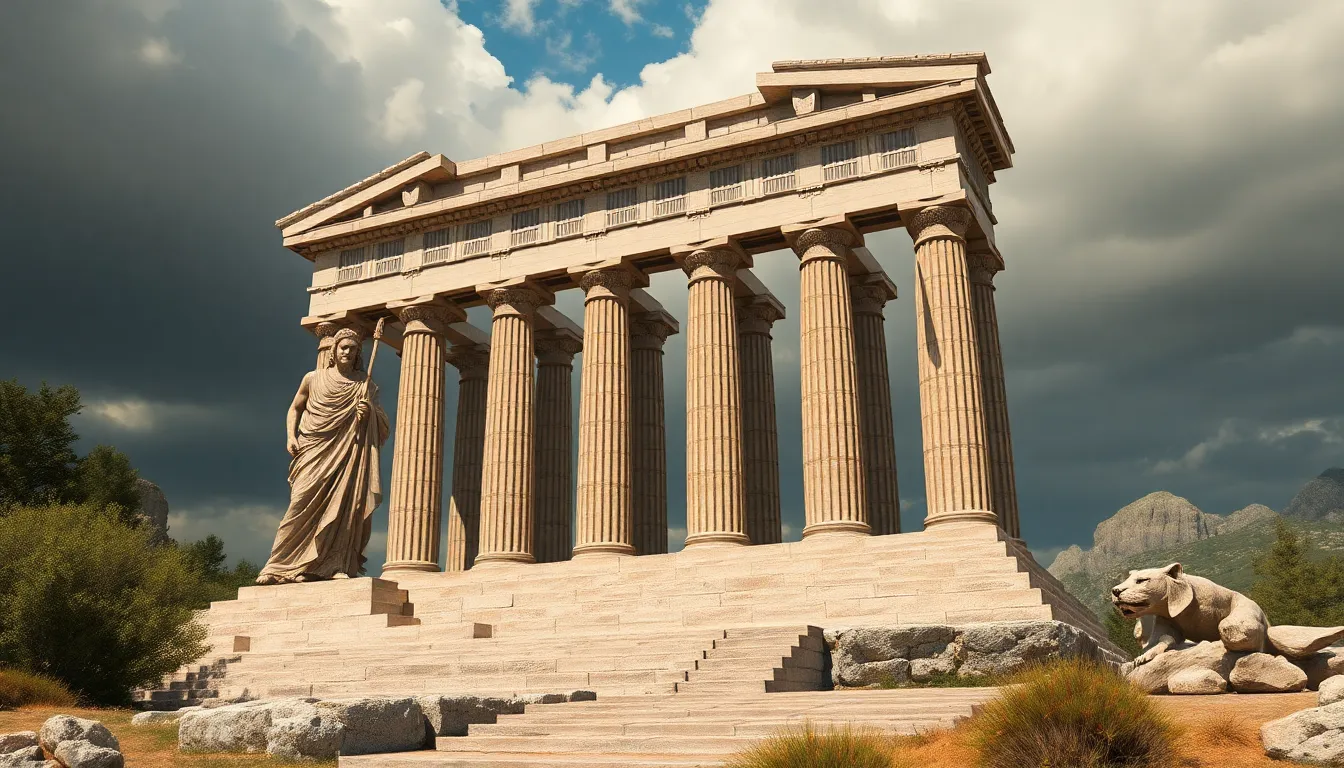The Titans: Predecessors of the Greek Pantheon and Their Legacy
I. Introduction
The Titans are among the most fascinating figures in Greek mythology, representing the ancient deities who predate the more well-known Olympian gods. These primordial beings played a crucial role in the formation of the cosmos and the establishment of divine order. Understanding the Titans is essential not only to grasp the origins of Greek mythology but also to appreciate the subsequent developments in the mythological narrative.
This article aims to explore the significance of the Titans in Greek mythology, their origins, the major figures among them, their conflicts with the Olympians, and their lasting legacy in culture and literature.
II. The Origin of the Titans
The Titans emerged from the primordial void known as Chaos, a concept that embodies the original state of the universe before creation. According to Greek creation myths, this chaotic void gave rise to Gaia (the Earth) and Uranus (the Sky), who became the progenitors of the first generation of Titans.
- Gaia: The Earth goddess, representing fertility and the physical world.
- Uranus: The sky god, who symbolized the heavens and the celestial dome.
Together, Gaia and Uranus bore twelve principal Titans, including Cronus, Rhea, Oceanus, Hyperion, and others. These beings occupied a critical role in the primordial landscape, governing various aspects of the natural world and human experience.
III. The Major Titans and Their Domains
Among the Titans, several figures stand out due to their significant roles and attributes:
- Cronus: The leader of the Titans, associated with time and harvest. He is often depicted as the father of Zeus and the other Olympians.
- Rhea: The mother of the Olympians, representing fertility and motherhood.
- Oceanus: The Titan of the ocean, embodying the vast and encircling waters.
- Hyperion: Often associated with light, he is the Titan of observation and the father of the sun, moon, and dawn.
The relationships among the Titans were complex, characterized by familial bonds, rivalries, and power struggles. For example, Cronus’s fear of being overthrown by his children led him to swallow them at birth, a foreshadowing of the eventual conflict with the Olympians.
IV. The Titanomachy: Clash of the Titans and Olympians
The Titanomachy, the epic battle between the Titans and the Olympian gods, marked a significant turning point in Greek mythology. As the Olympians, led by Zeus, rose to power, they challenged the rule of the Titans, leading to a fierce conflict that lasted for ten years.
- Key Events:
- The initial struggles between the two factions.
- The involvement of various other beings, like the Cyclopes and the Hecatoncheires, who sided with the Olympians.
- The ultimate defeat of the Titans and their imprisonment in Tartarus, a deep abyss used as a dungeon of torment.
The aftermath of the Titanomachy saw Zeus and his siblings—Hera, Poseidon, Demeter, Hestia, and Hades—establishing their reign over the cosmos, effectively ending the age of the Titans.
V. The Legacy of the Titans in Greek Mythology
The legacy of the Titans is profound, influencing the characteristics and narratives surrounding the Olympian gods. Many Olympians inherited traits from their Titan predecessors, such as strength, authority, and a connection to the natural world.
- Influence on Olympian Gods:
- Zeus’s authority mirrors that of his father, Cronus.
- Rhea’s nurturing qualities are reflected in goddesses like Hera and Demeter.
The Titans also appear in various myths, often as cautionary figures representing the consequences of hubris and the inevitability of change. Their symbolism is prevalent in Greek culture, representing both the chaos from which order emerged and the struggles inherent in creation.
VI. The Titans in Art and Literature
The Titans have been depicted extensively in ancient Greek art, often portrayed in sculpture and pottery. These representations illustrate their grandeur and the awe they inspired in the ancient Greeks.
- Artistic Representations:
- Frescoes and pottery depicting the Titanomachy.
- Sculptures of major Titans, showcasing their physical power and divine attributes.
In classical literature, the Titans are referenced by poets such as Hesiod and Homer, who explore their roles in the cosmic hierarchy. Modern interpretations of Titan myths continue to captivate audiences, often reimagining these ancient figures in contemporary narratives and media.
VII. Comparative Analysis: Titans in Other Mythologies
The concept of primordial beings akin to the Titans appears in various mythologies worldwide. For example, in Mesopotamian mythology, gods like Tiamat and Apsu serve as primordial entities from which other gods emerge.
- Similarities and Differences:
- Both the Titans and other primordial beings represent the chaotic origins of the universe.
- However, the Titans are often depicted with more human-like qualities compared to other mythological figures.
The influence of the Titans can also be observed in Roman mythology, where figures such as Saturn are drawn from the Titan Cronus, highlighting the interconnectedness of ancient mythologies.
VIII. Conclusion
In summary, the Titans hold a crucial place in Greek mythology as the predecessors of the Olympian gods. Their stories reflect the themes of chaos and order, power struggles, and the evolution of divine authority. The Titans’ legacy endures not only in ancient texts but also in modern interpretations, emphasizing their significance in understanding mythology’s impact on culture.
Studying the Titans and their narratives offers valuable insights into the human condition, the nature of power, and the complexities of existence, making them a timeless subject worthy of exploration.




